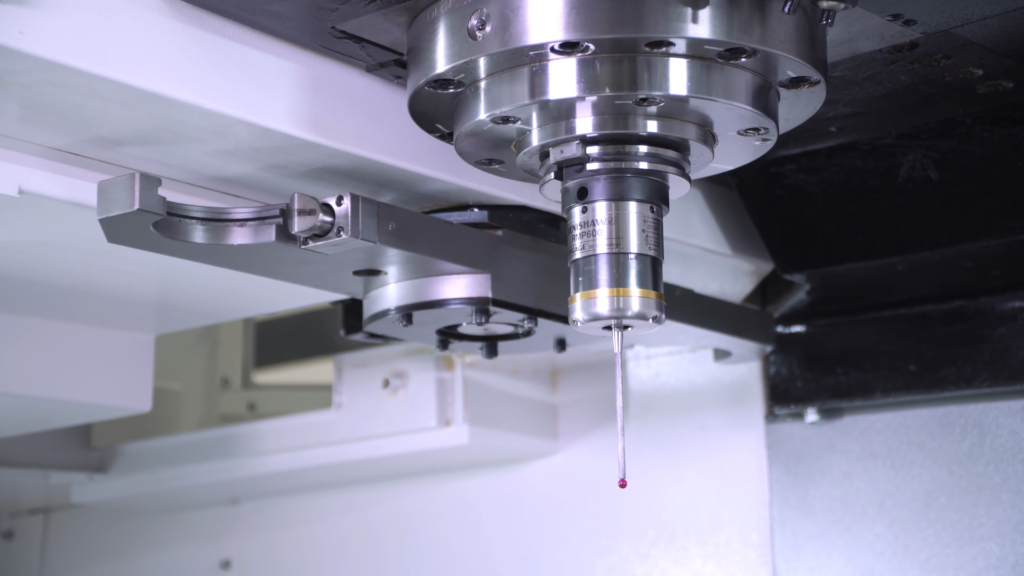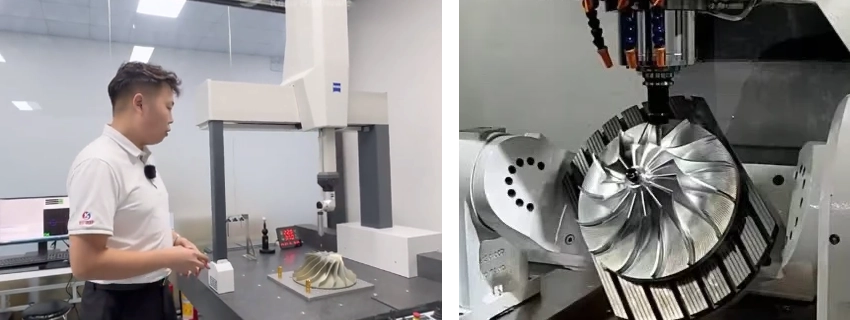Precision CNC machining is critical for industries requiring high-accuracy components, such as aerospace, medical, and automotive. Achieving tolerances as tight as ±0.001 mm demands advanced equipment, optimized processes, and meticulous quality control. This guide details actionable steps, specific parameters, and best practices to master precision CNC machining.
Selecting High-Precision CNC Equipment
High-accuracy machining starts with the right equipment. Precision CNC machines must deliver repeatability and stability under demanding conditions.
High-Precision CNC Machines
Choose CNC machines with rigid frames and positioning accuracy of ±0.002 mm or better. Examples include:
- 5-axis machining centers (e.g., DMG Mori DMU 50, repeatability: ±0.0015 mm)
- Swiss-type lathes (e.g., Citizen Cincom, spindle runout: <0.0005 mm)
- High-speed milling machines (e.g., Mazak VCN-510C, linear accuracy: ±0.002 mm)
Ensure the machine has a thermally stable design, with cooling systems maintaining spindle temperatures within ±0.5°C.
Spindle and Tooling Systems
Use high-speed spindles (10,000–40,000 RPM) with low runout (<0.001 mm). Opt for precision tool holders like HSK-A63 or BT30, which offer clamping repeatability of <0.002 mm. For micro-machining, use shrink-fit holders to minimize vibration.
Environmental Control
Maintain a controlled environment with:
- Temperature: 20°C ±1°C
- Humidity: 40–60%
- Vibration isolation: <0.1 µm amplitude
Use vibration-damping granite bases and climate-controlled cleanrooms to ensure stability.

Optimizing Machining Processes
Precision machining requires fine-tuned processes to minimize errors and achieve superior surface finishes (Ra <0.1 µm).
Tool Selection and Parameters
Select tools based on workpiece material:
- Aluminum: Carbide end mills, 0.01–0.05 mm/rev feed rate, 500–1,000 m/min cutting speed
- Titanium: CBN inserts, 0.005–0.02 mm/rev feed, 50–150 m/min speed
- Stainless steel: Coated carbide, 0.01–0.03 mm/rev feed, 100–300 m/min speed
Use micro-grain carbide tools for small features (e.g., Ø0.1 mm drills). Apply high-pressure coolant (70–100 bar) to reduce thermal deformation.
Cutting Strategy
Implement multi-stage machining:
- Roughing: 0.5–2 mm depth of cut, 50–70% tool engagement
- Semi-finishing: 0.1–0.5 mm depth, 20–40% engagement
- Finishing: 0.01–0.05 mm depth, 5–10% engagement
Use trochoidal milling for high-speed machining to reduce tool load and heat buildup.
Coolant and Lubrication
Employ minimum quantity lubrication (MQL) with 10–50 ml/h flow or cryogenic cooling for heat-sensitive materials like titanium. High-pressure coolant systems improve chip evacuation and extend tool life by 20–30%.
CNC Programming and Simulation
Accurate programming and simulation are vital for precision machining, especially for complex geometries.
CAM Software and Toolpaths
Use advanced CAM software like Siemens NX or Mastercam to generate optimized toolpaths. Key settings:
- Tolerance: 0.001 mm
- Stepover: 0.005–0.02 mm for finishing
- Smoothing: G05.1 Q1 for high-speed interpolation
For 5-axis machining, use simultaneous toolpaths to maintain constant tool engagement.
Simulation and Verification
Run simulations in Vericut to detect collisions, overcuts, or gouging. Verify G-code with a digital twin of the machine, ensuring positional errors are <0.002 mm.
Quality Control and Measurement
Consistent quality assurance ensures machined parts meet stringent tolerances.
In-Process Monitoring
Use in-machine probes (e.g., Renishaw OMP60) for real-time measurement. Set probe accuracy to ±0.001 mm and calibrate daily.
Offline Inspection
Employ metrology equipment:
- Coordinate Measuring Machine (CMM): Zeiss Prismo, accuracy ±0.0007 mm
- Surface profilometer: Ra measurement to 0.01 µm
- Laser scanner: Dimensional accuracy to ±0.002 mm
Implement Statistical Process Control (SPC) with Cp/Cpk >1.33 for critical dimensions.

Workforce and Maintenance
Skilled operators and well-maintained equipment are essential for sustained precision.
Train operators on CNC programming, tool setup, and metrology. Perform preventive maintenance every 1,000 hours, checking:
- Spindle runout: <0.001 mm
- Linear axis accuracy: ±0.002 mm
- Lubrication systems: No leaks or clogs

KeSu Precision Machining Services
KeSu offers advanced CNC machining, Swiss machining, turning, milling, and multi-axis machining with a strong focus on tight tolerances (±0.005mm or better) and high-quality finishes.
Whether it’s small-scale prototypes or large-volume production, we deliver durable and dependable components. KeSu is committed to providing comprehensive high precision machining solutions to meet the diverse needs of our clients across various industries.
In CNC precision machining Kesu is among the top manufacturer of machine parts all over the world and in China they are the top 5 best service providers of CNC precision machining parts.
Frequently Asked Questions (FAQ)
What is the tightest tolerance achievable in precision CNC machining?
With advanced equipment and processes, tolerances as tight as ±0.001 mm are achievable, particularly in aerospace and medical applications.
How does environmental control impact CNC machining precision?
Temperature fluctuations >1°C or vibrations >0.1 µm can cause thermal expansion or tool deflection, leading to errors of 0.005 mm or more.
What are the best materials for precision CNC machining?
Materials like 6061 aluminum, Ti-6Al-4V titanium, and 316 stainless steel are ideal due to their uniform structure and machinability.
How can I reduce tool wear in precision machining?
Use coated tools, optimize cutting parameters (e.g., 0.01 mm/rev feed), and apply high-pressure coolant to extend tool life by up to 30%.
